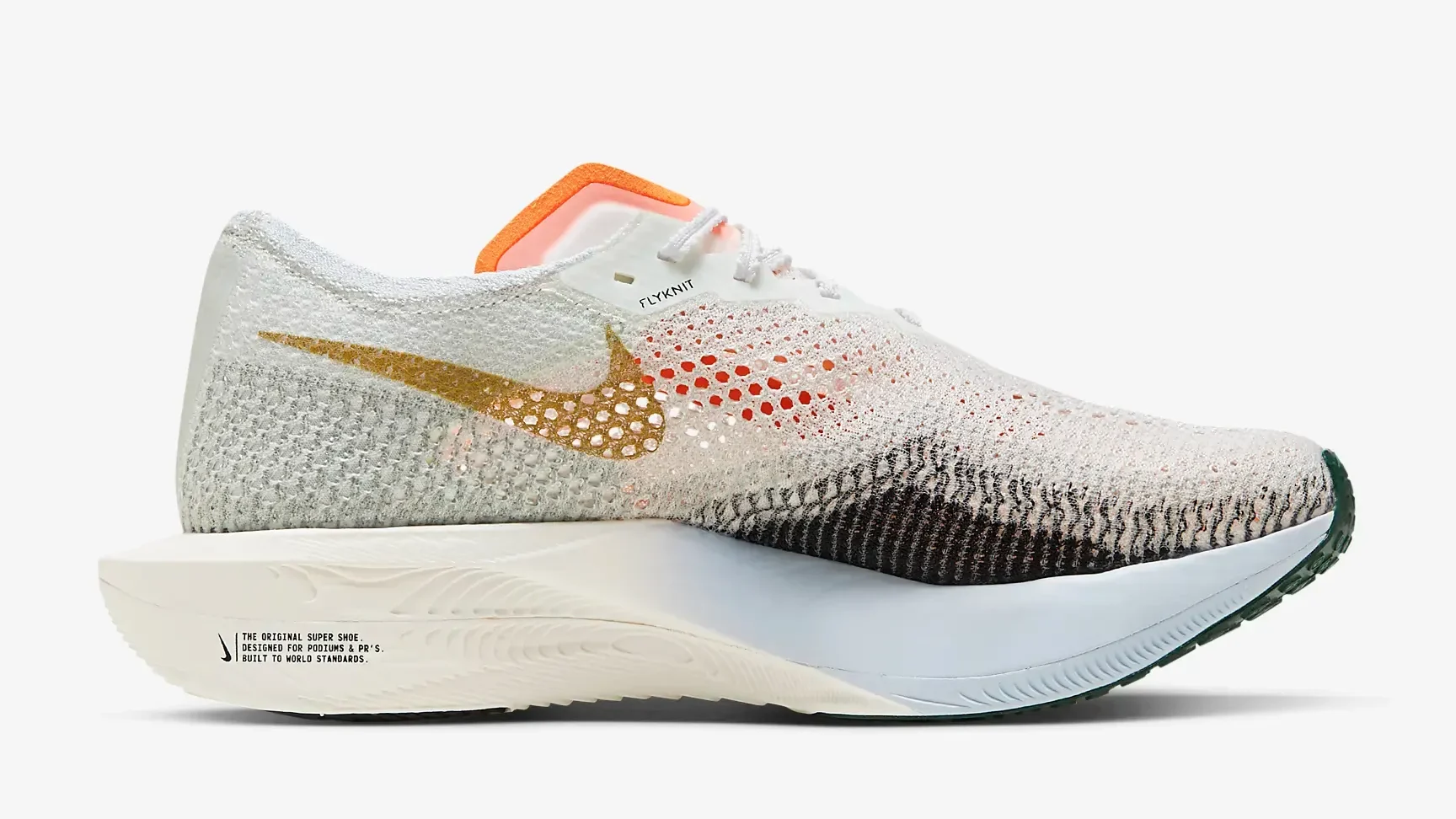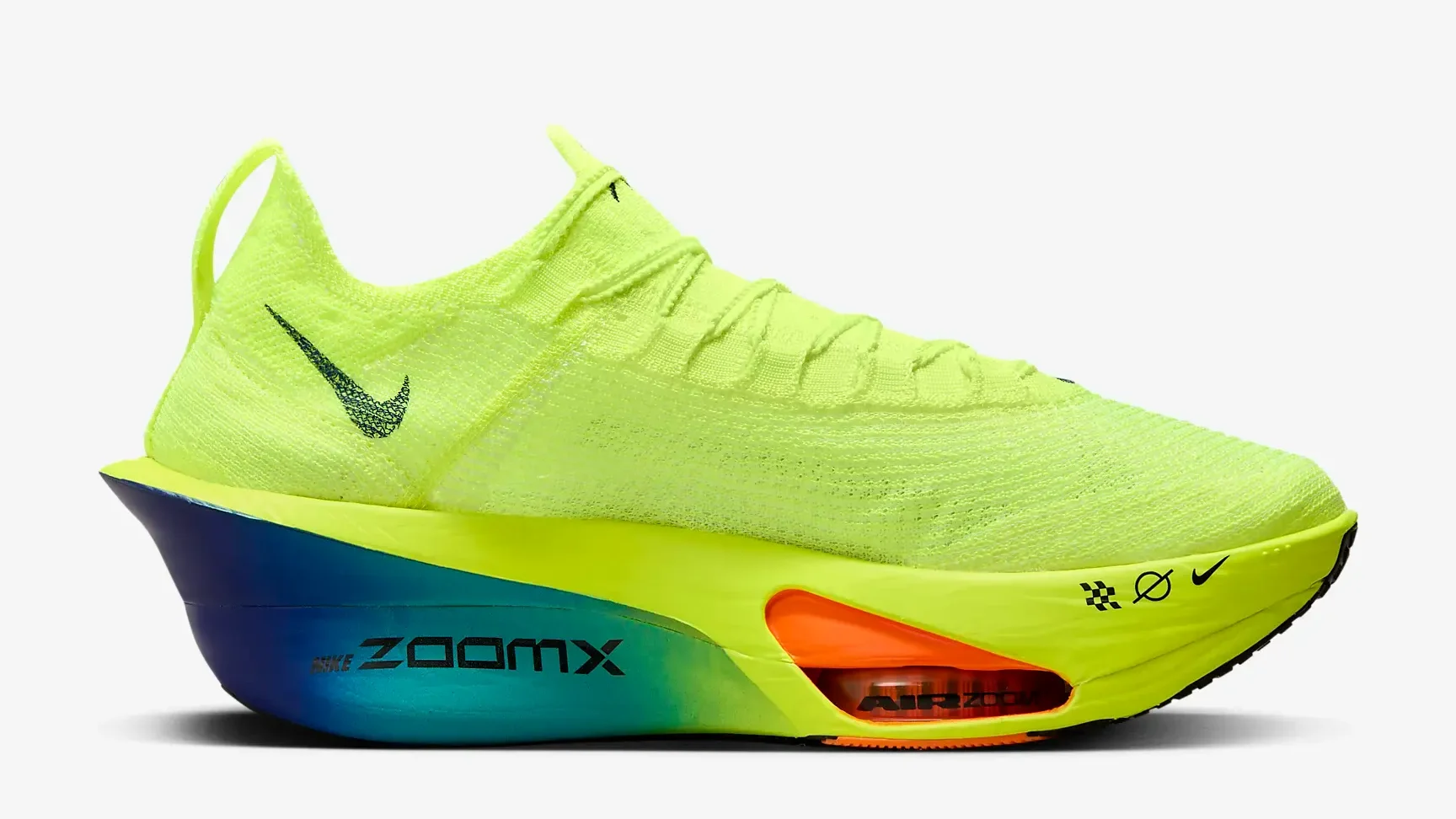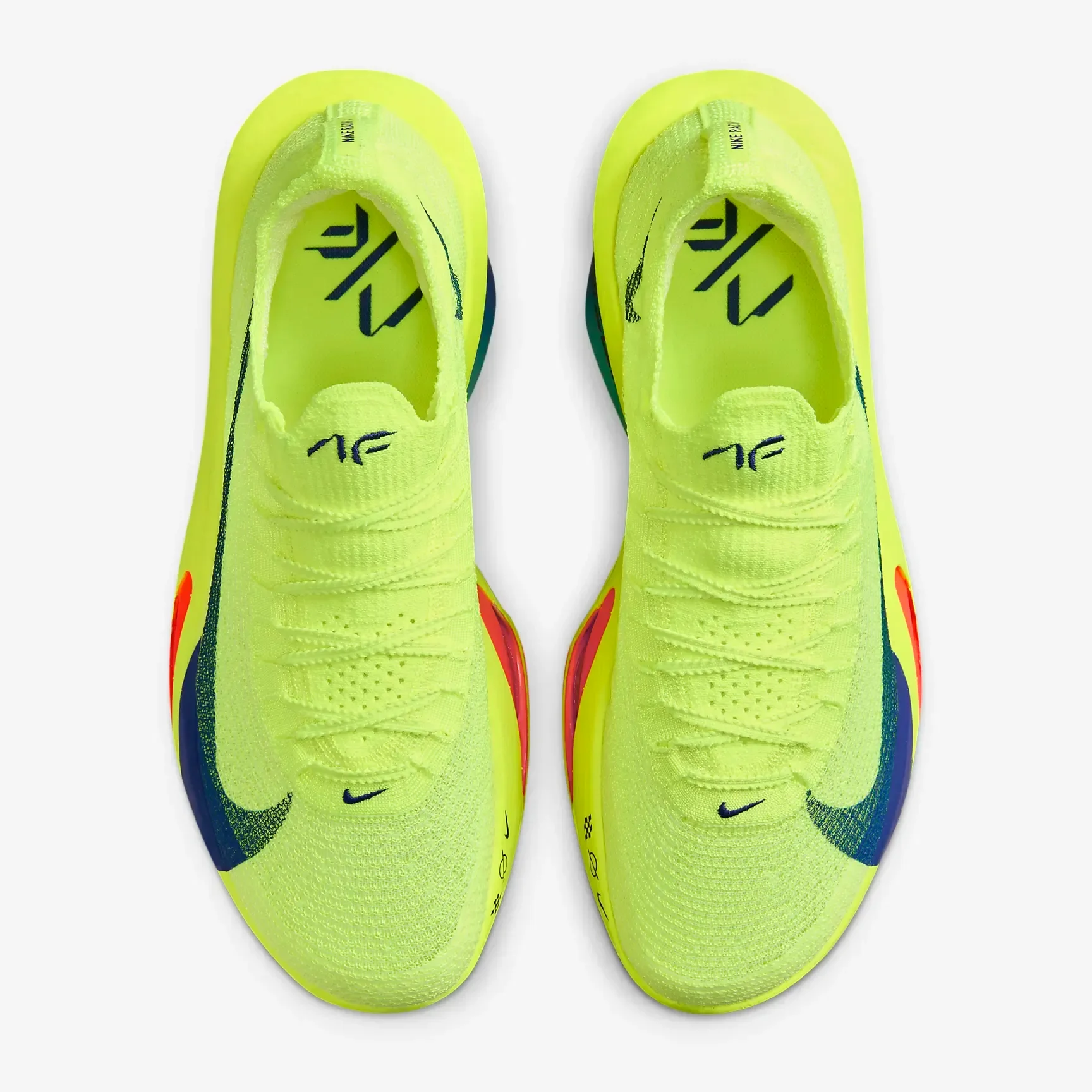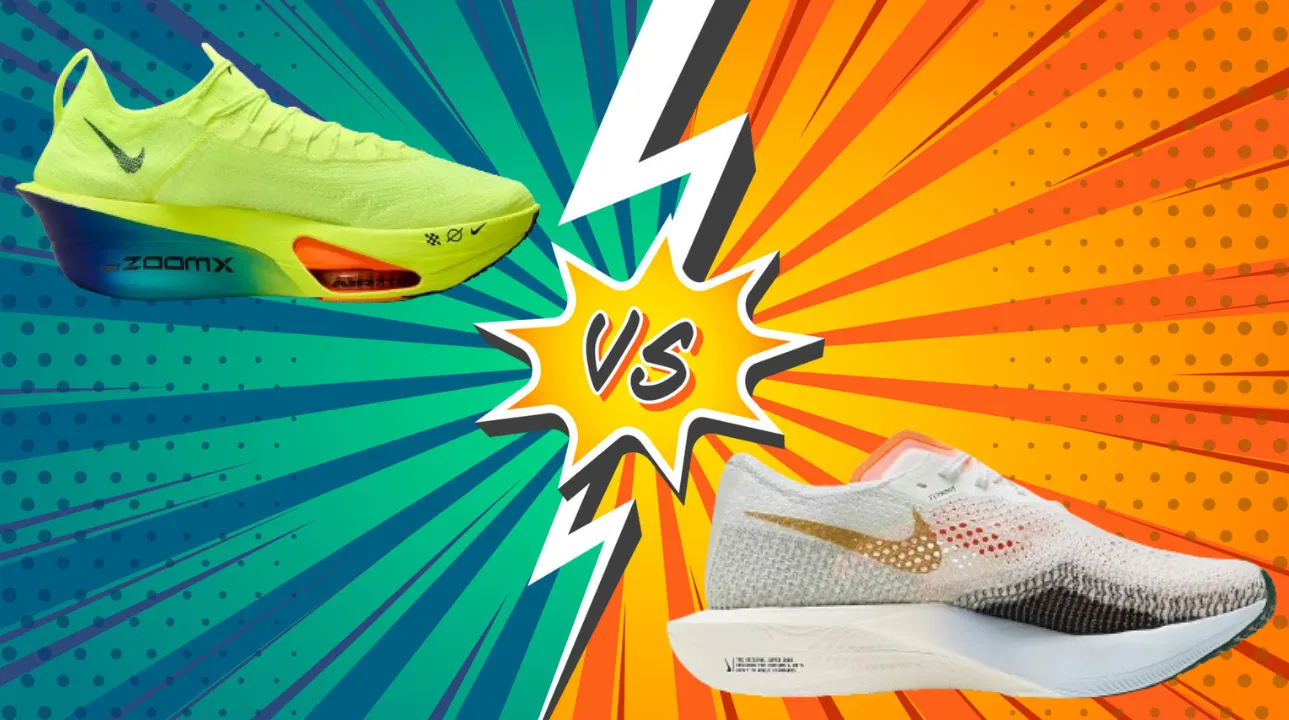If you’re a serious runner looking for a racing shoe that can help unlock your top performance, the Nike Alphafly 3 and Nike ZoomX Vaporfly 3 are two of the top options to consider. Both shoes claim to offer runner comfort while also providing the latest technologies to help maximize speed.
But with similarities in their technologically advanced cushioning systems, carbon fiber plates, and lightweight builds, you may be wondering—which comes out on top? We’ll compare the key features of Nike’s two flagship racers to help you decide which model fits your running needs best.
Comparison Table Between Nike Alphafly 3 and Nike ZoomX Vaporfly 3:
| Feature | Nike Alphafly 3 | Nike ZoomX Vaporfly 3 |
|---|---|---|
| Launched In | 2024 | 2024 |
| Stability | Neutral | Overpronation support |
| Flexibility | Flexible | Stiff |
| Sizing | Men’s 7-13, Women’s 5.5-11 | Unisex |
| Weight | 7 oz | 6.5 oz |
| Cushion | Zoom Air Pods | ZoomX Foam |
| Outsole | Rubber | ZoomX foam & rubber |
| Midsole | ZoomX Foam | Carbon fiber plate |
| Upper | Flyknit | Flyknit |
| Retail Price | $285 | $260 |
Features Comparison:
Materials:
The Alphafly 3 features a Flyknit upper with reinforced mesh around the toes for breathability and support. Its ZoomX foam midsole contains Zoom Air pods for responsive cushioning, while its rubber outsole offers durability.


The Vaporfly 3 also utilizes a Flyknit upper for a flexible, sock-like fit. Its standout full-length carbon fiber plate provides a rigid platform for energy return. A wide base of bouncy ZoomX foam runs the length of the shoe, with some strategically placed rubber on areas of the ZoomX foam outsole for added durability.
Durability:
The Alphafly 3 should deliver over 300 miles of use for most runners. Key areas have been reinforced for an improved lifespan compared to the Alphafly NEXT%. However, the Vaporfly 3 still holds the edge for durability thanks to more coverage by its rubber outsole. The exposed ZoomX areas may show wear before the Alphafly’s high-abrasion rubber.
FIT:
With its gender-specific sizing available in both men’s and women’s, the Alphafly 3 is engineered to provide a tailored fit for most foot shapes right out of the box. The reinforced Flyknit upper wraps securely around the midfoot, while the roomy toe box gives toes plenty of room to splay naturally.


However, the Vaporfly 3’s extremely flexible Flyknit upper material can stretch to accommodate wider foot shapes if needed. Its sock-like construction forgives variances in foot volumes, adapting to feet that need some extra width-wise room.
So ultimately, runners needing those extra allowances for wider feet or swelling may gravitate towards the Vaporfly 3’s ultra-accommodating fit. Both versions envelop your foot in a smooth, seamless upper, but the Vaporfly provides more wiggle room for feet to spread out.
CUSHIONING:
When it comes to cushioning systems, preference will likely dictate choice between the Alphafly and Vaporfly racing models. The Alphafly 3 utilizes segmented Zoom Air units contained within the lightweight ZoomX foam midsole for an ultra-responsive, springy sensation that appeals to some runners.
Meanwhile, the Vaporfly 3 envelops the entire foot in a full-length ZoomX foam midsole for an exceptionally plush and smooth ride from heel to toe that caters to other preferences. Both Nike shoes provide ample cushioning for hardcore training and racing demands, but they deliver that underfoot softness through different foam technologies.
STABILITY:
With its single-density midsole design, the Alphafly 3 lacks built-in stability guidance for pronation, classifying it as a neutral running shoe. Meanwhile, the Vaporfly 3 incorporates a widened carbon fiber plate and raised sidewall barriers along the ZoomX foam midsole to provide light stability and help guide excess inward foot rolling for mild overpronators.
So runners needing just a touch of pronation support may lean towards the Vaporfly 3, while neutral runners can remain comfortable in the evenly-cushioned Alphafly 3.
Value:
At $250 vs $300, your wallet may push you towards the well-cushioned Vaporfly 3 over the innovation-packed Alphafly 3. But forFeatures its propulsive toe-off sensation and race-specific design, some runners will still find the Alphafly a worthy splurge.
Performance comparison:
Walking:
The Alphafly’s flexible forefoot and unstructured curved heel feel rather unstable and wobbly for casual walking use. However, the full-length carbon plate and supportive foam sidewalls of the Vaporfly provide a more solid platform for a walking shoe. And the Vaporfly’s ultra-plush ZoomX cushioning absorbs impact comfortably all day, unlike the thinner Alphafly built expressly for running.
Running:
When it comes to faster running paces, the Alphafly 3 stands out as the specialized racing shoe option between the two. With its snappy Zoom Air pods, an aggressive carbon plate, and featherlight build stripping away excess weight, Nike engineered this model expressly for race day velocity over 5K to marathon distances. The Vaporfly still runs smoothly but prioritizes cushioning over all-out speed.
All-Day Wear:
For all-day wear, the durable cushioning of the Vaporfly makes it the workhorse between the two Nike options. Its full-length ZoomX midsole brings bouncy, long-lasting comfort hour after hour in a flexible yet supportive package. Meanwhile the Alphafly lacks underfoot support and padded comfort for extended wear beyond racing needs.
Plantar Fasciitis:
Between the two options, the Vaporfly Aligns better as a shoe for plantar fasciitis, with its continuous ZoomX cushioning system better absorbing shock along the whole foot versus the rigid segmented Alphafly. And the smooth transition of the Vaporfly’s carbon plate puts less strain on sensitive feet compared to the Alphafly’s aggressive race-focused rocker design.
Conclusion:
If chasing PRs at your next race is the priority, the Nike Alphafly 3 takes the edge as the optimal choice between the two models. Engineered expressly for event day velocity, it offers race-focused features like Zoom Air responsiveness, an aggressive carbon plate, and lightweight build.
But runners focused on high mileage, all-day wear, or requiring pronation support may favor the well-rounded comfort and durable cushioning of the Nike ZoomX Vaporfly 3. With its full-length carbon plate and ultra-soft ZoomX foam, Nike built this model to better handle training demands too.
There’s no universally “better” option—the ideal pick comes down to weighing your specific running needs against the purpose-built strengths of each shoe. But with tech and comfort at the forefront, you can’t go wrong lacing into either of these innovative Nike racers.

